Has the water supply to your home suddenly become non-existent? Wondering what might have happened, and – more importantly – how to fix it?
Read on to resolve the problem as quickly as possible.
📌 Key Takeaways:
- No water in your home might be caused by a problem with the distribution system, a plumbing issue in your own home, or a partially-closed water valve.
- If your water pressure drops or your water supply vanishes completely, follow these steps:
- Check other faucets in your home
- Look for a major leak
- Look online for reported problems
- Check your water source
- Check for frozen pipes
- Speak to your neighbors
- Contact your water utility
- Call a local plumber
Table of Contents
📋 4 Common Causes Of No Water Pressure
Before we share what to do if you suddenly lose your water supply, it’s helpful to have some knowledge of the potential causes of reduced or no water flow or pressure.
The most likely causes of no water pressure are:
A Situation At The Distribution System
Water supplied to your home needs to travel through an underground network of pipes, known as the distribution system, from where it was stored in tanks or reservoirs at the treatment plant.
For instance, a firefighting team might need to tap into the distribution system via a fire hydrant to quickly access a lot of water, greatly reducing or cutting off your water supply temporarily.
Incorrectly Positioned Main Water Supply Valve
Your main water shutoff valve, or main valve, might not be completely open, restricting the amount of water coming into your home. To provide enough water flowing through your pipes, the shut-off valve should be parallel to the main water pipe.
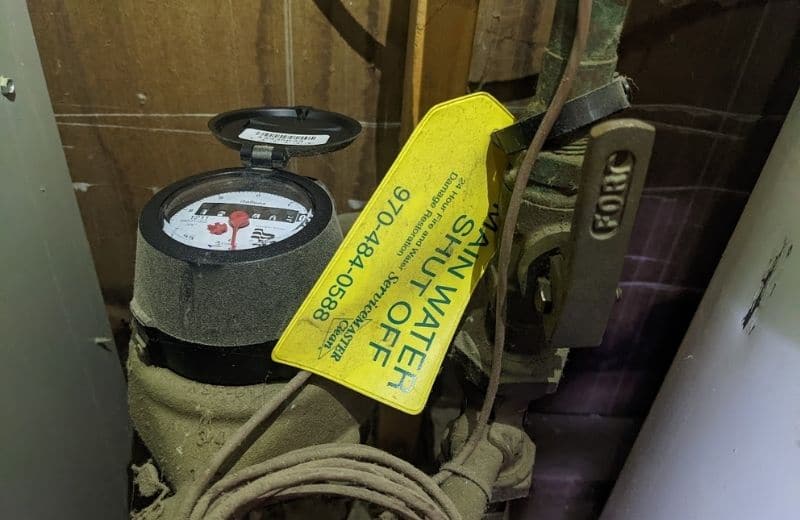
Clogged Or Leaking Pipes
Clogged pipes and sediment buildup may restrict the flow of water and greatly reduce water pressure in your entire house. There are numerous contaminants that could clog your pipes, especially if you’re on a well water supply.
A major leak in your home could also cause your water pressure to drop significantly due to most of the water escaping before it reaches your home.
A Problem With The Water Meter Valve
If your water flow issues began just after work was completed on your house, it’s possible that the contractor doing the job didn’t properly open the water meter valve. You’ll need to call the contractor and ask for someone to come and open the valve completely.
🚱 No Water Pressure? Follow These 8 Steps
Now, let’s look at what you should do if you suddenly have no water in your house.
Step 1: Check Other Taps
First, check that the problem applies to your entire home, and not just to one of your faucets or fixtures.
Check all the other water taps in your home. If you’re still getting water from these, the problem is likely caused by a clogged or faulty faucet, or by a clogged or leaking pipe leading to the faucet in question.
Check the pipes to the tap and try to work out the cause of the issue.
Alternatively, if all the faucets and fixtures in your home aren’t producing water, move on to the next step.
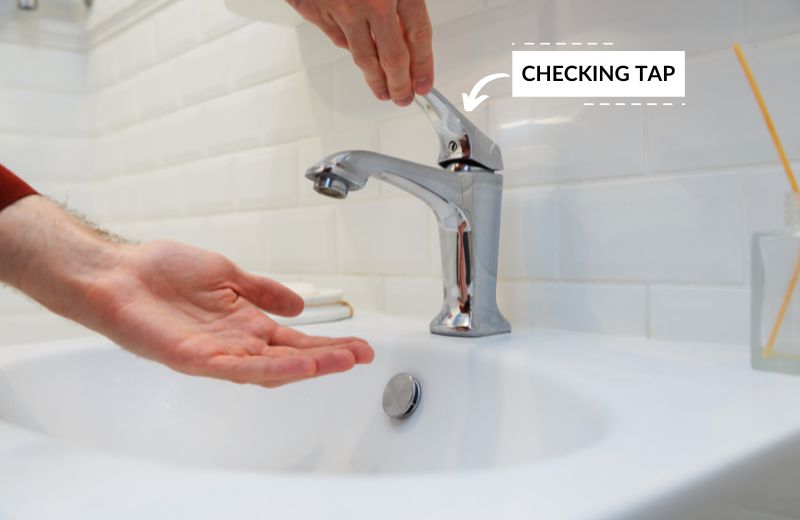
Step 2: Look For a Major Leak
Your next job is to look for signs of a major leak in your home’s water supply lines.
Check all the rooms in your home, including your basement and cupboards, to make sure water isn’t escaping from any of your pipes. Also make sure that your hot water heater isn’t leaking.
When looking for a leak, you can speed up the process by determining whether your hot and cold water are off, or whether just your hot water system isn’t delivering water.
The good news is that a large leak usually makes itself known pretty quickly, so you likely would have discovered this as a cause already. However, if you discover a leak, you should act fast and shut off the supply valve upstream of the leak to prevent further damage.
If you can’t see a leak, move on to the next step.
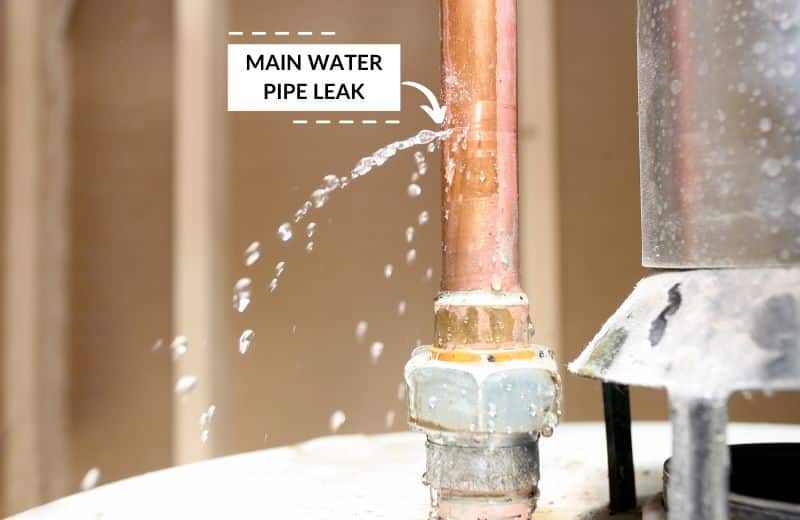
Step 3: Look Online For Reported Problems
You might not be the only person dealing with water issues in your home. The quickest and easiest way to find out the cause of the problem, or at least see if anyone else is affected, is to look online.
Check the website and social media accounts of your water utility to see if customers have reported a problem or if the utility has made an announcement. You can also check on apps like Nextdoor or Facebook groups for your local community to see if anyone has mentioned the problem.
If you can’t find any explanation online or you don’t have access to the internet, move on to step 4.
Step 4: Check Your Water Source
Next, examine the valve that sends some of the public water supply into your home. Make sure this valve is open all the way. If it is, then you can rule that out as a problem.
If your water source is a private well, check that the well water pump is working properly. The pressure tank could also have an issue that’s preventing water from entering your home.
It’s worth hiring a well contractor or professional plumber to help you get to the bottom of a water delivery issue with your well. Most likely, your well pump or another well component needs fixing, or there’s an issue with the supply of water in the aquifer.
If you can’t find any issues with the water source, move on to step 5.
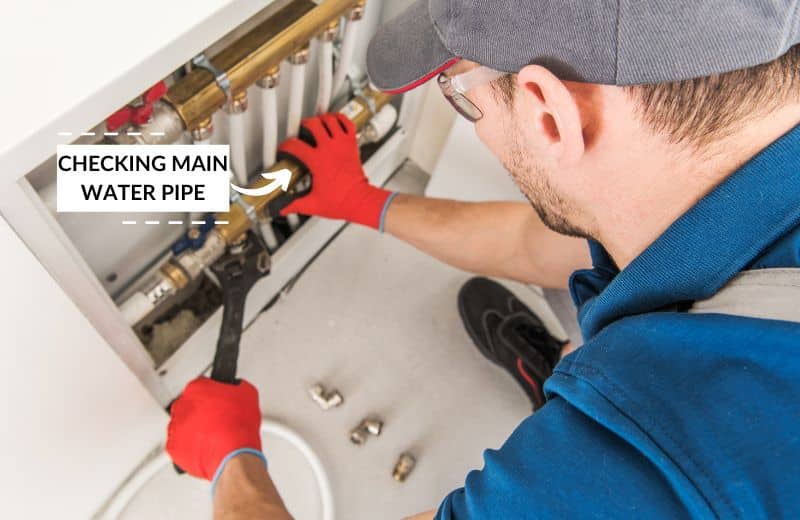
Step 5: Check For Frozen Pipes
Most pipes in the water system are beneath the ground, which protects them from freezing in the colder months.
However, if your community has been hit with freezing temperatures and your home’s water has been cut off, you might have an uninsulated above-ground pipe that has frozen.
You can prevent your pipes from freezing by insulating them properly, so if a frozen pipe is the cause of the water supply issues, read up on how to insulate a water pipe. In the short term, you can also try and resolve the issue by heating the pipe with a heat source (like a hairdryer).
If this isn’t the issue, move on to the next step.
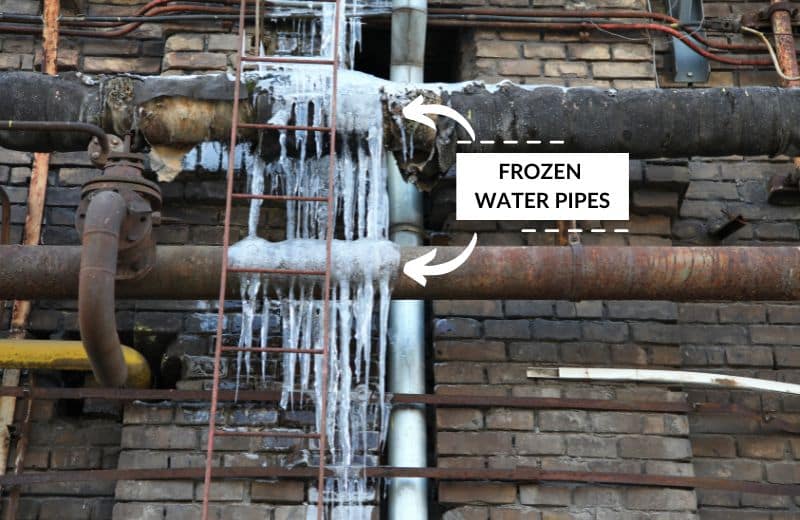
Step 6: Speak To Your Neighbors
You’ve already looked online to see if anyone in your area has reported a problem to your water company, or whether your water company has made a statement.
Even if you couldn’t find anything, your neighbors might be dealing with the same problem as you. Ask around to see if anyone else has no water coming into their home, and how long they’ve noticed the issue.
Step 7: Contact Your Water Utility
By this point, you’ve ruled out almost all the causes of no water, including plumbing problems in your own home, and the worst-case scenario: a major leak. So, the issue probably lies with your local water company.
It’s time to call your water supplier to see if municipal water pressure is down due to a situation further up the system. For instance, your supplier might be fixing a leak or damage to a major water pipe, and may need to temporarily shut off the water main while they fix it.
If your water utility is aware of the issue, they should be able to advise you on when service is expected to resume as normal.

Step 8: Call a Local Plumber
Still not determined the cause of the lack of water in your home?
In this case, we recommend calling a professional plumber, who can visit your home and begin troubleshooting the issue within the same day.
Professional plumbers have the tools and knowledge to identify the cause of a water delivery issue that you might have overlooked. They can carry out inspections and tests that help you to determine why there’s no water coming into your faucets.
📑 Final Word
Discovering that your home has no water can be alarming, but there isn’t usually cause for concern.
In the majority of cases, you should be able to fix the issue quickly, or – even more likely – the issue is caused by your water company and will be resolved within a matter of hours.
If you follow the steps outlined above, you should be able to quickly determine why there is no water coming into your home and take action to resolve the issue if there’s a problem on your end.
